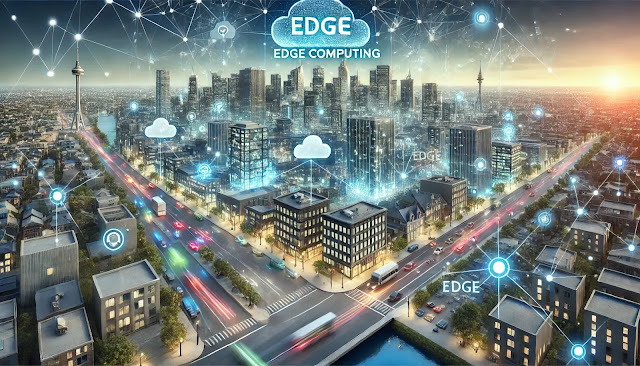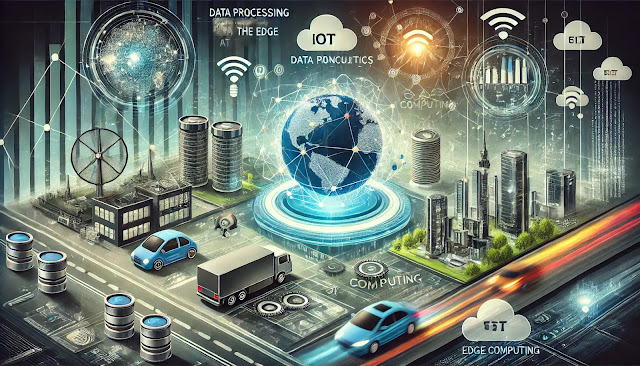Introduction to Edge Computing
In today’s digital landscape, the demand for real-time data processing and low-latency communication is growing. Edge computing has emerged as a solution that brings data storage and processing closer to where it’s needed — the edge of the network. Unlike traditional cloud computing, which centralizes data processing, edge computing distributes it across devices, improving speed and reducing the bandwidth needed to transfer data back and forth to a cloud server.
Edge computing is pivotal in various fields like the Internet of Things (IoT), autonomous vehicles, and industrial automation. It enables devices to process data locally, responding to events in real time without waiting for instructions from a distant cloud server.
Key Benefits of Edge Computing
Reduced Latency: One of the primary advantages of edge computing is the reduction in latency. Traditional cloud computing systems require data to be sent to and from a central server, often resulting in delays. Edge computing enables faster response times because the processing happens locally, at the device level or in nearby edge nodes, minimizing the time taken for data transfer.
Improved Data Security: Since data is processed closer to its source, fewer data packets travel across long distances. This reduces the risks of data interception and breaches. Sensitive information, especially in healthcare and finance, benefits from edge computing's ability to keep more data on local networks, enhancing overall security.
Lower Bandwidth Usage: As data is processed at the edge, fewer data streams are sent to centralized cloud servers, reducing the overall bandwidth consumption. This is particularly beneficial for applications like video streaming, where real-time processing is required and constant uploading of raw data would consume significant bandwidth.
Real-Time Analytics: Edge computing facilitates real-time data analysis, which is crucial for industries like manufacturing, healthcare, and smart cities. With edge devices like sensors or cameras collecting and analyzing data at the source, businesses can make immediate decisions based on the data generated.
Scalability: Edge computing allows businesses to scale their operations more efficiently. By distributing processing tasks across multiple devices, companies can avoid overloading a single cloud infrastructure. This decentralization helps in accommodating more devices and handling an increasing amount of data.
Use Cases of Edge Computing
Autonomous Vehicles: Autonomous vehicles rely heavily on real-time data processing for safe navigation. Edge computing helps cars process information from sensors, cameras, and radars directly on the vehicle, enabling quick responses to changing environments without relying on cloud connectivity.
Healthcare and Remote Patient Monitoring: Healthcare systems are increasingly adopting edge computing for remote monitoring devices that track patient vitals in real time. These devices can process data locally and only send alerts when critical issues arise, reducing the load on healthcare networks and ensuring faster response times.
Smart Cities: Edge computing plays a critical role in the development of smart cities. From traffic management systems that optimize traffic flow in real-time to energy grids that adjust energy usage dynamically, edge computing supports efficient city management by reducing latency and improving the reliability of data processing.
Industrial Automation: In factories, edge computing can be used to automate machinery and detect faults immediately. Sensors on the factory floor collect data and analyze it locally, allowing machines to self-correct or send alerts when maintenance is required. This improves efficiency and reduces downtime.
Retail and Customer Experience: Retailers can leverage edge computing to enhance customer experiences. For example, cameras and sensors in stores can analyze customer behavior and adapt in-store displays or offers in real time. By processing this data at the edge, retailers can make dynamic decisions that improve sales and customer satisfaction.
Conclusion
Edge computing represents a transformative shift in how data is processed, stored, and analyzed. Its ability to reduce latency, improve security, lower bandwidth usage, and offer real-time insights makes it a game-changer across industries. As more devices become interconnected through IoT, the demand for edge computing will continue to grow, shaping the future of industries such as healthcare, transportation, and urban management.







0 Comments